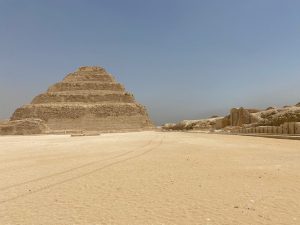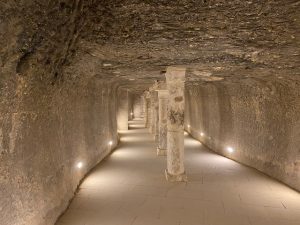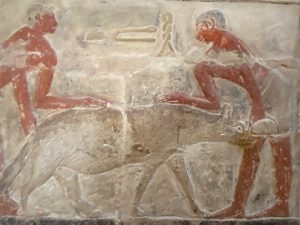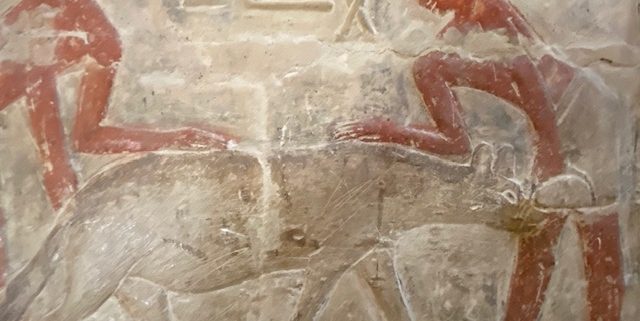private guided tour to Sakkara
Private guided tour to Sakkara
Martine Jardel contacted me to make a private guided tour to Sakkara. I asked her if she preferred to do this tour in a full day or a half-day. We took the inclusive ticket to the site as she chose a full-day tour.

Imhotep Museum
We visited the Imhoteb Museum which was built thanks to the teamwork of Jean-Philippe Lauer, the French Egyptologist who dedicated an important part of his life to Sakkara. This museum displays objects that he discovered at the site and shows the architecture before the time of Pharaoh Djoser. The museum presents a list of Egyptologists who worked on the site and a map showing all the different historical eras of the site of Sakkara.
In Sakkara, there are the pyramids of the pharaohs, as well as the mastabas of nobles and important figures that carry prestigious titles.
In most of these mastabas, we can see representations of daily life at the time, remarkable for their state of preservation and the quality of their colors.
We visited the complex of Djoser, and his pyramid (the step pyramid) which the Egyptian government closed for a long time and reopened recently to present his great architectural revolution: the first attempt at stone construction.

the Mortuary Temple and Pyramid of Pharaoh Unas
Is considered the “beauty of the place” dating back to the Fifth Dynasty of the Old Kingdom, and the first pyramid decorated with religious texts.
The time available during this private day tour to Sakkara allowed us to visit the tomb of the brothers, the hairdressers of the Pharaoh, Controllers of the Manicures at the palace, and confidants of the king, discovered by an Egyptian archaeologist in 1964. Next door, we find the tomb of the Butchers discovered in 1940, with its 14 statues.
We did not forget to visit the necropolis of the bulls, which we consider the enigma of Sakkara because it is a different, exceptional construction, unique in the world. Auguste Mariette discovered this site in 1851 and Egyptian authorities closed it for 15 years for its restoration. It contains 24 Aswan granite sarcophagi, each weighing between 60 and 80 tons. This cemetery is dedicated to the cult of the Apis bull, a living manifestation of the god Ptah, who was the local god of Memphis, the first capital of Pharaonic Egypt. We wondered how the ancient Egyptians managed to fit these sarcophagi into the tombs, how they managed to carve granite so perfectly, and if these sarcophagi had a funeral function or some other function.
We also visited Mehu‘s tomb, Zakie Saad discovered it in 1940 and recently opened it to visitors. Mehou was a vizier of Pharaoh Pepi I and had 48 prestigious titles. This tomb dating from the time of the 6th Dynasty composed of four rooms is well decorated colorful and rich in scenes of daily life at that time. Then, we visited the mastaba of Mereruka discovered by Jacques Morgan in 1892 and opened to the public in 1912. He too had several titles as Minister of Justice, Prime Minister, and a High Priest and was the most powerful person after Pharaoh Teti because he was married to his daughter. We could see scenes of fishing, hunting, farming, and craftsmanship.
 We finally visited the pyramid of Teti, the tombs of Kagemni, the tomb of Ti, and the mastaba of Idut.
We finally visited the pyramid of Teti, the tombs of Kagemni, the tomb of Ti, and the mastaba of Idut.
Martine concluded that a private guided tour was necessary to make a complete visit to the site of Sakkara given its richness.



